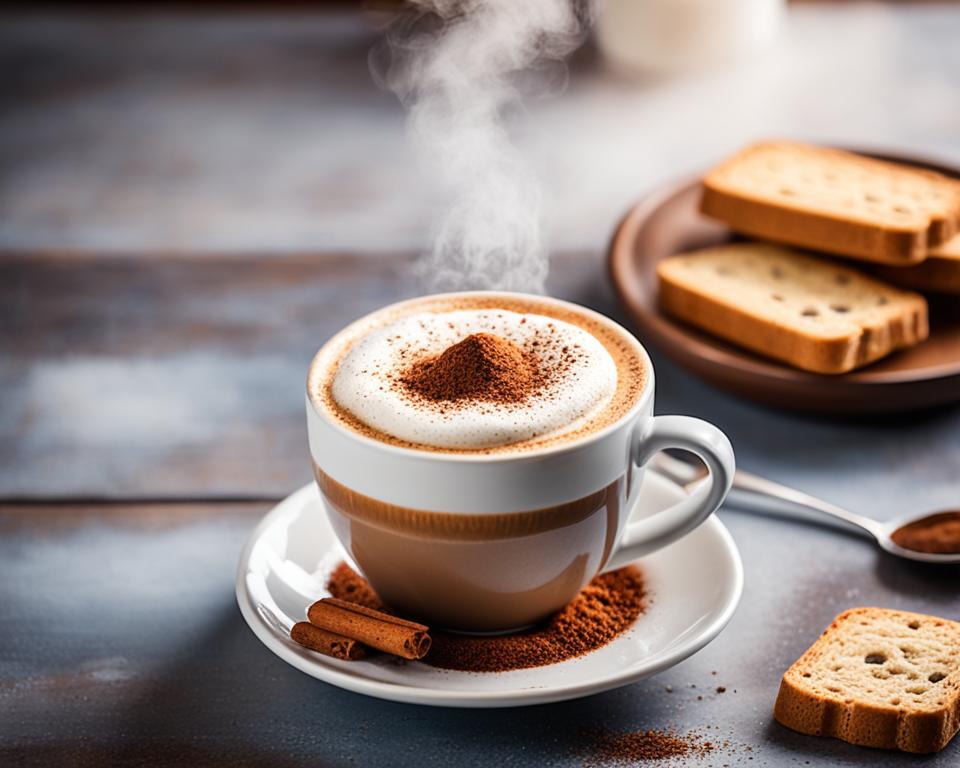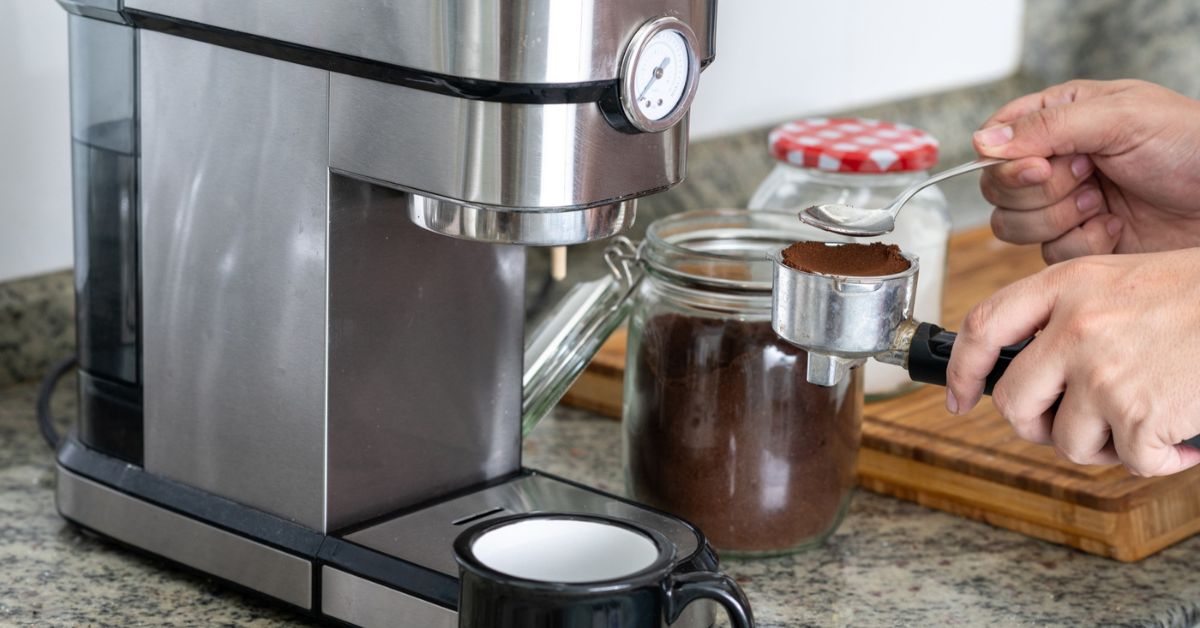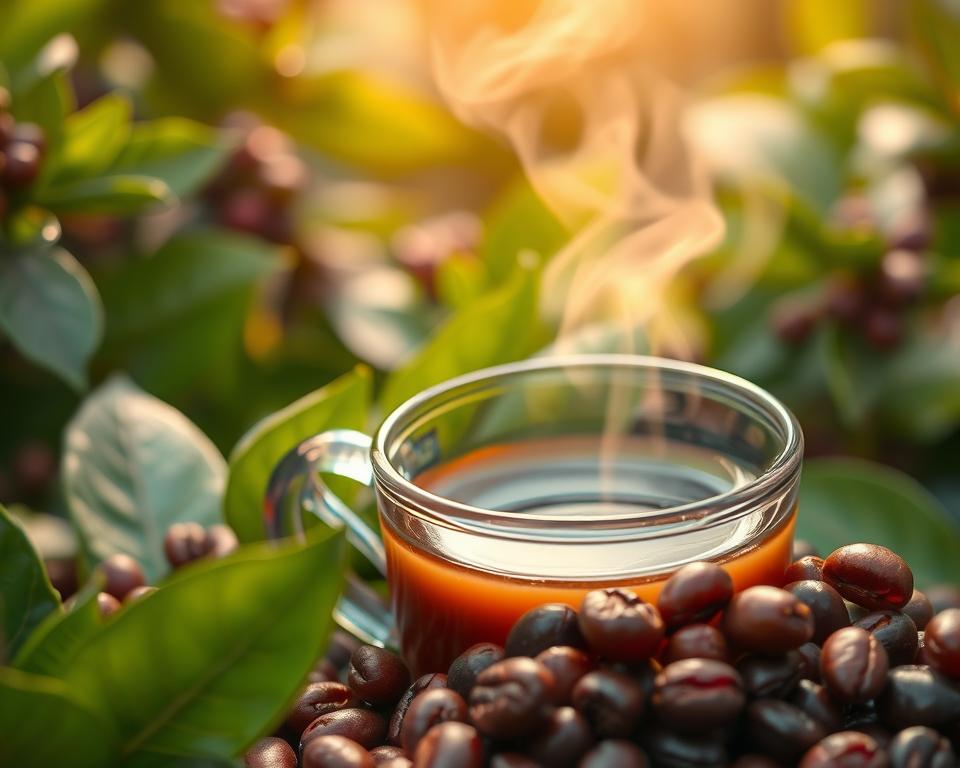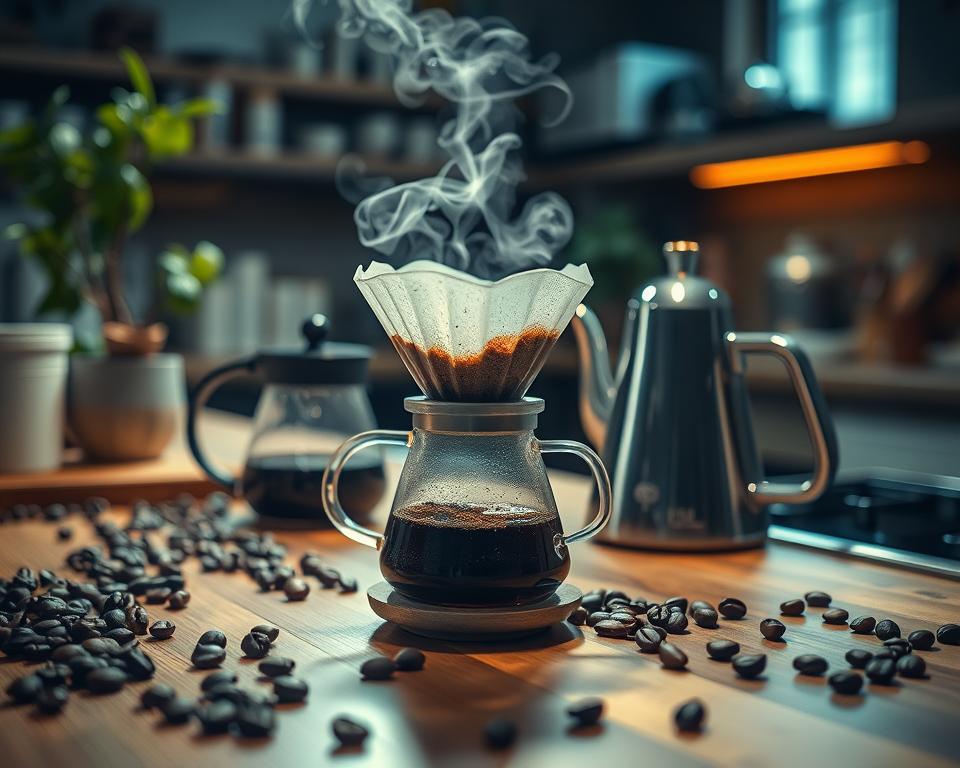Every morning, I cherish the ritual of preparing a cappuccino. There’s something magical about the way an espresso-based drink comes together with frothed milk to create the perfect start to my day. It’s a moment of serenity and perfection.
For many, a cappuccino isn’t just a drink; it’s an embodiment of Italy’s traditional coffee culture.
Have you ever wondered why this drink holds such a special place in our hearts? The answer lies in its beautiful composition of equal parts espresso shot, steamed milk, and that delightful froth.
The richness of espresso combined with creamy milk and airy froth creates a harmonious blend that coffee enthusiasts, like myself, find irresistible.
The legacy of the cappuccino is deeply rooted in Italian mornings. Its balanced flavor profile showcases the exquisite craftsmanship of blending bitter and creamy elements, a testament to its long-standing cultural significance.
For more on this delightful beverage, the National Coffee Association USA, Spruce Eats, and Italian Coffee Association offer in-depth insights into its preparation, variations, and cultural importance.
Introduction to Cappuccino
Among coffee aficionados, cappuccinos hold a special place, loved for their frothy texture and robust espresso base.
Typically enjoyed in the morning, this delightful beverage has become an essential part of daily rituals for many, often rivaling the popularity of lattes and Americanos.
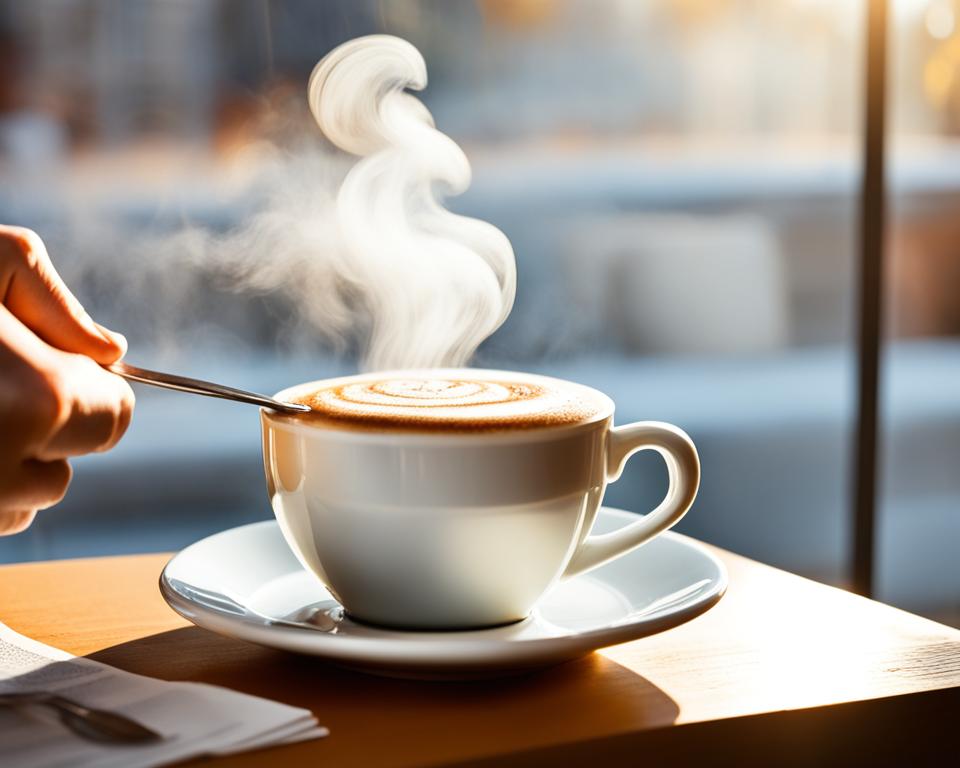
Preparing the perfect cappuccino requires an espresso machine, showcasing the artistry and technical skill needed to achieve the ideal milk texture.
The combination of steamed milk and frothed milk creates a velvety experience that many coffee lovers seek in coffee shops, setting a high standard for quality.
At the Barista Institute, they discuss the cultural impact and standard expectations for a quality cappuccino in coffee shops.
The team over at CoffeeScience delves into the psychology behind the morning ritual and the sensory joy of drinking a cappuccino.
According to the Specialty Coffee Association, the traditional cappuccino is defined by specific criteria, ensuring that the beverage remains authentic and satisfying.
History and Origin of Cappuccino
Have you ever wondered where the cappuccino got its name? This Italian beverage has a rich and fascinating past.
How Cappuccino Got Its Name
The term “cappuccino” comes from the Capuchin monks, named for the similarity between the color of the drink and the color of their robes.
The history of this beloved coffee spans several centuries, intertwining with both religious and cultural influences.
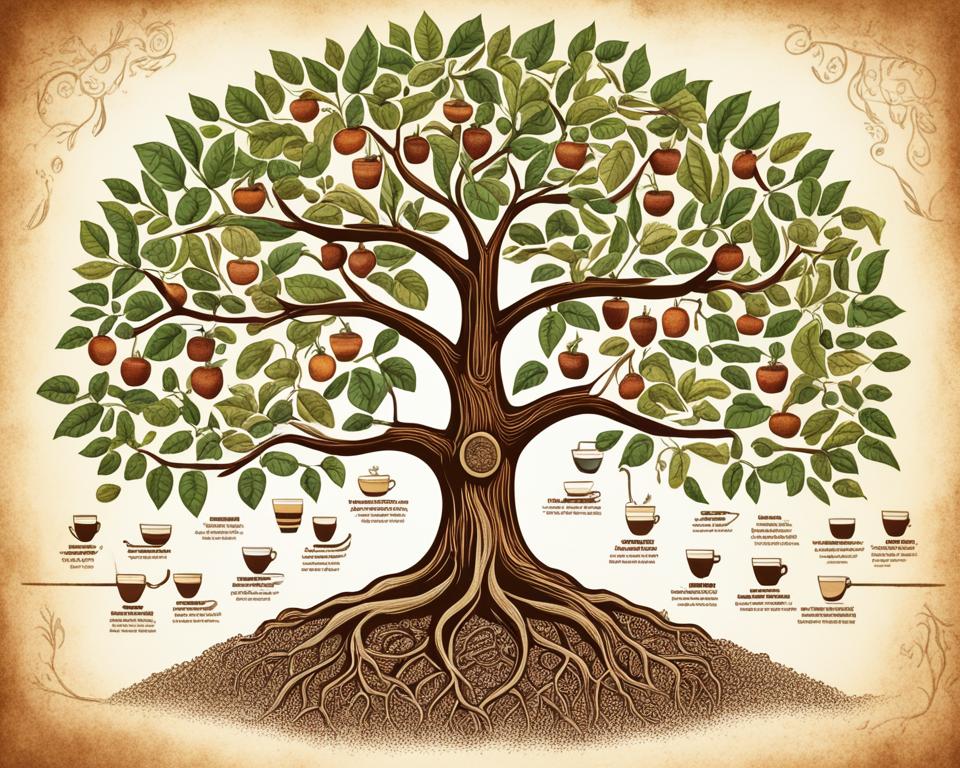
Evolution of Cappuccino Over Time
First appearing in the early 20th century with the advent of espresso machines, cappuccino forever changed the landscape of coffee history.
Innovators in Italy used espresso innovation to create new experiences in their local coffee customs. The blend of coffee and milk within this drink also has its roots in Viennese coffee traditions, which added a European twist to this Italian favorite.
From its origins in quaint Italian cafes to its worldwide popularity today, the evolution of cappuccino mirrors an era of coffee innovation and cultural exchange.
This timeless Italian beverage continues to charm coffee lovers globally, thanks to its rich history and dynamic flavor profile.
Traditional Ingredients in a Cappuccino
When it comes to crafting a traditional cappuccino, knowing the ratio is key. A precise blend of one-third aromatic espresso, one-third steamed milk, and one-third frothy milk creates this beloved drink.
The barista craftsmanship behind a cappuccino is an art form. Achieving the perfect froth consistency isn’t just about luck; it takes skill and practice.
The barista uses their expertise to create a silky, smooth froth that balances perfectly with the espresso.
quality of ingredients matters a lot. Using fresh, high-grade coffee beans and the right type of milk can make or break your cappuccino.
You’ll find that paying attention to the milk-to-coffee ratio can change the entire flavor profile of the drink.
Temperature also plays a crucial role. The milk shouldn’t be too hot, and the espresso should be brewed just right to maintain its aromatic essence.
These details ensure that each sip is a harmonious mix of flavors.
Dive into the world of cappuccino-making by exploring techniques for selecting the best espresso beans and understanding how to control milk temperature. It’s a rewarding journey for any coffee lover!
Is a Flat White Similar to a Cappuccino in Terms of Preparation?
When comparing a flat white and a cappuccino, understanding differences between flat white and cappuccino is essential. Both beverages use espresso as a base but differ in milk texture and quantity. A flat white features microfoam, creating a velvety finish, while a cappuccino has a thicker, frothier milk layer on top.
How to Make a Cappuccino at Home
Brewing a cappuccino at home can be a rewarding experience. Whether you’re a coffee aficionado or just enjoy a good cup of Joe, making this classic espresso-based drink yourself isn’t as daunting as it may seem.
With the right equipment and a bit of practice, you can create a cappuccino that rivals those from your favorite coffee shops.
Essential Equipment
To start, you’ll need some key tools: a quality burr grinder, a manual or automatic espresso machine, a milk frother or steam wand, and a thermometer.
The grinder ensures your espresso beans are ground to the right consistency, while the espresso machine extracts the perfect shot.
The milk frother helps achieve that silky, velvety texture essential to a great cappuccino. A thermometer is handy to prevent overheating your milk.
Step-by-Step Guide
First, grind your coffee beans to a fine consistency, suitable for espresso. Next, tamp the ground coffee into the portafilter and lock it into the espresso machine.
Brew your espresso shot, aiming for a rich, aromatic extraction. While the espresso brews, steam your milk to around 150°F using a steam wand or milk frother. Pour the steamed milk over the espresso, holding back the foam with a spoon, and then top with the frothed milk.
Common Mistakes to Avoid
One common mistake is overheating the milk, which can result in a burned taste. Aim for a temperature between 150°F and 155°F.
Using the wrong grind size can also be an issue; too coarse, and your espresso will be weak; too fine, and it can be bitter. Finally; avoid improper layering.
Make sure to combine steamed milk and espresso smoothly before topping with froth to maintain the traditional texture and flavor.
FAQ
What is a cappuccino?
A cappuccino is an espresso-based drink that originated in Italy. It is composed of equal parts espresso, steamed milk, and frothed milk, offering a balanced flavor profile characterized by the bitterness of the espresso and the creaminess of the milk.
Why is a cappuccino mainly enjoyed in the morning?
In Italy, cappuccinos are traditionally a morning beverage, often enjoyed with breakfast. The rich and frothy texture complements the robust espresso, making it a favorite among coffee aficionados. It also fits well into daily rituals, rivaling other popular morning drinks like lattes and Americanos.
How did the cappuccino get its name?
The cappuccino gets its name from the Capuchin monks in Italy. The drink’s light brown color is similar to the color of the monks’ robes. The term “cappuccino” started to be used in the early 20th century with the rise of espresso machines in Italy.
What ingredients are used in a traditional cappuccino?
A traditional cappuccino is made with one-third espresso, one-third steamed milk, and one-third frothed milk. The barista’s skill in frothing the milk and the quality of the espresso beans and milk are crucial to achieving the ideal flavor and texture.
What equipment do I need to make a cappuccino at home?
To make a cappuccino at home, you will need a quality burr grinder, a manual or automatic espresso machine, a milk frother or steam wand, and a thermometer. These tools help ensure you get the perfect grind size, milk texture, and temperature.
Can you provide a step-by-step guide for making a cappuccino at home?
Sure! First, grind your coffee beans to the correct size. Then, use an espresso machine to extract the perfect shot. Steam and froth the milk using a milk frother or steam wand until it reaches a silky consistency. Finally, combine the espresso shot with the steamed milk and froth to create a balanced and flavorful cappuccino.
What are some common mistakes to avoid when making a cappuccino?
Avoid overheating the milk, using an improper grind size, and using incorrect layering. Overheated milk can ruin the flavor, while using the wrong grind size can affect the espresso extraction. Proper layering ensures the right balance of milk and coffee in each sip.

